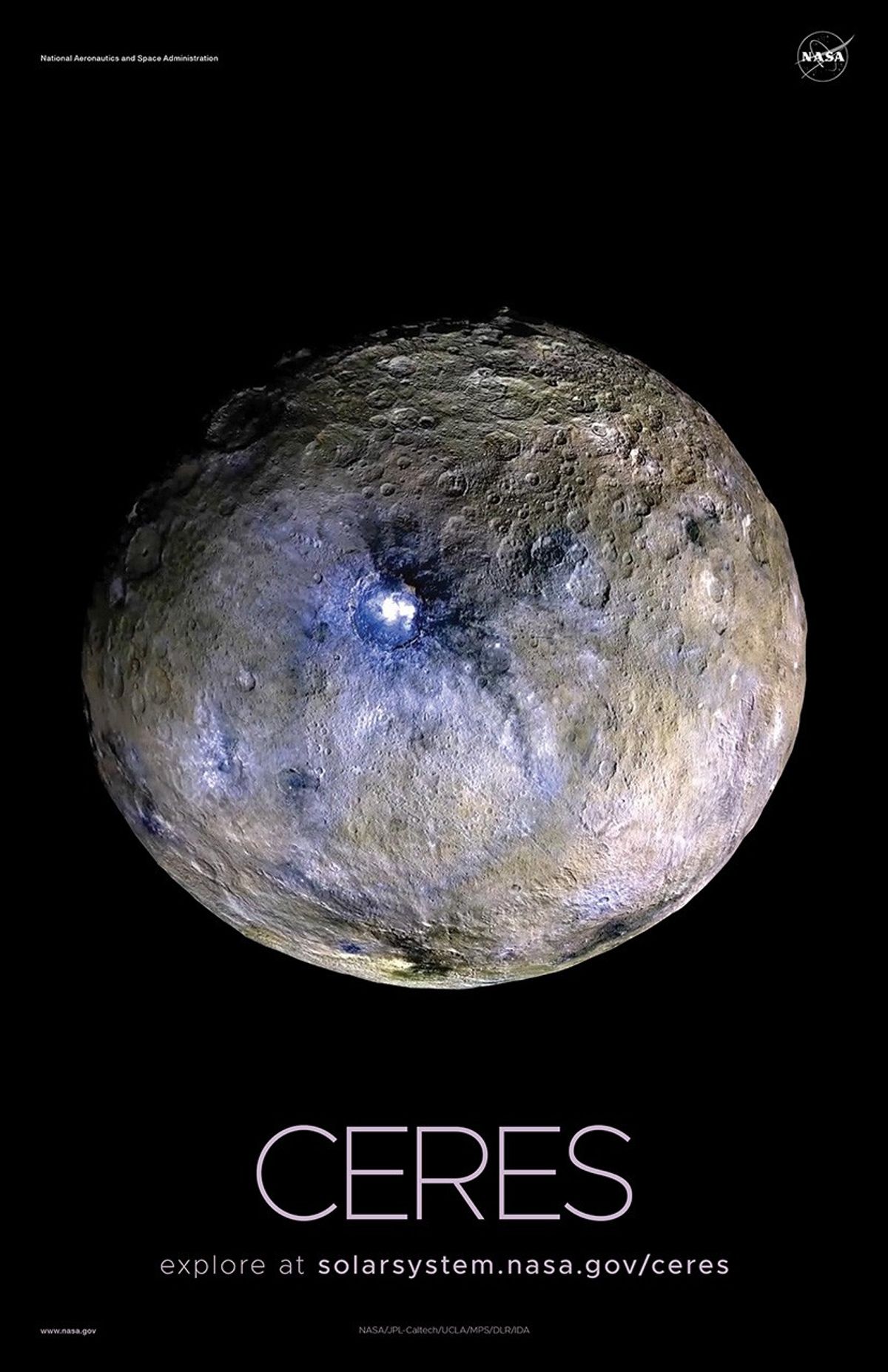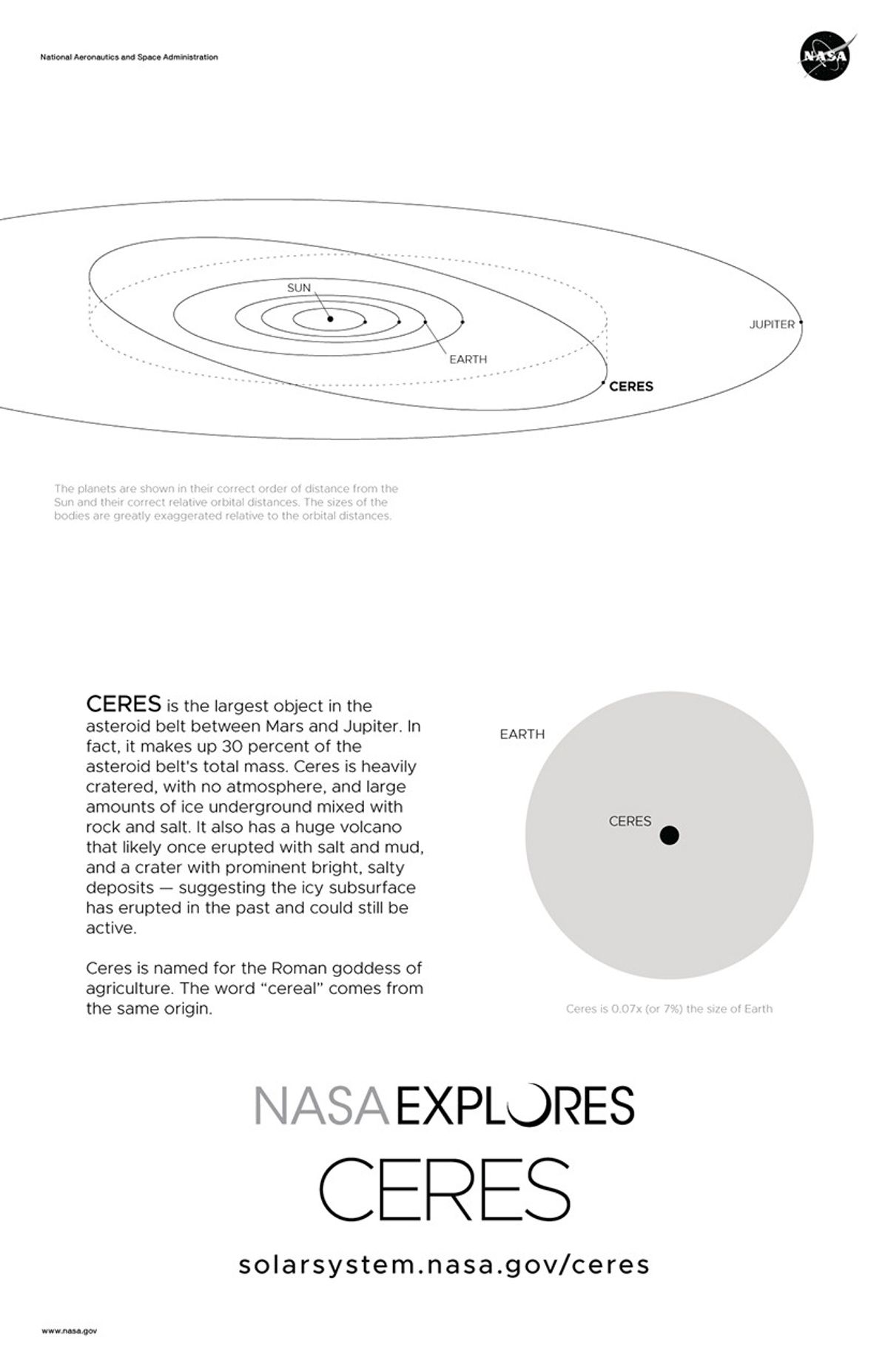Ceres Poster – Version A
| Credit | NASA |
|---|---|
| Language |
|
Version A of the Ceres installment of our solar system poster series.
The posters are best printed on 11x17 paper. Several download options are available below.
- There are three iterations of this poster: Version A, Version B and Version C.
- Download the full Solar System poster set
About the image: The dwarf planet Ceres is shown with surface materials highlighted. Credit: NASA/JPL-Caltech/UCLA/MPS/DLR/IDA
On the Back
Ceres is the largest object in the asteroid belt between Mars and Jupiter. In fact, it makes up 30 percent of the asteroid belt's total mass.
Ceres is heavily cratered, with no atmosphere, and large amounts of ice underground mixed with rock and salt. It also has a huge volcano that likely once erupted with salt and mud, and a crater with prominent bright, salty deposits — suggesting the icy subsurface has erupted in the past and could still be active.
When Giuseppe Piazzi spotted it in 1801, he thought Ceres might be a comet—but it turned out that he had discovered the first member of the asteroid belt.
Although it was classified as an asteroid for many years, Ceres is so much bigger and so different from its rocky neighbors that scientists re-classified it as a dwarf planet in 2006. Ceres is the only dwarf planet located in the inner solar system (the rest are beyond the orbit of Neptune).
Ceres is named for the Roman goddess of agriculture. The word “cereal” comes from the same origin.
Explore Ceres in depth at https://science.nasa.gov/dwarf-planets/ceres/




























